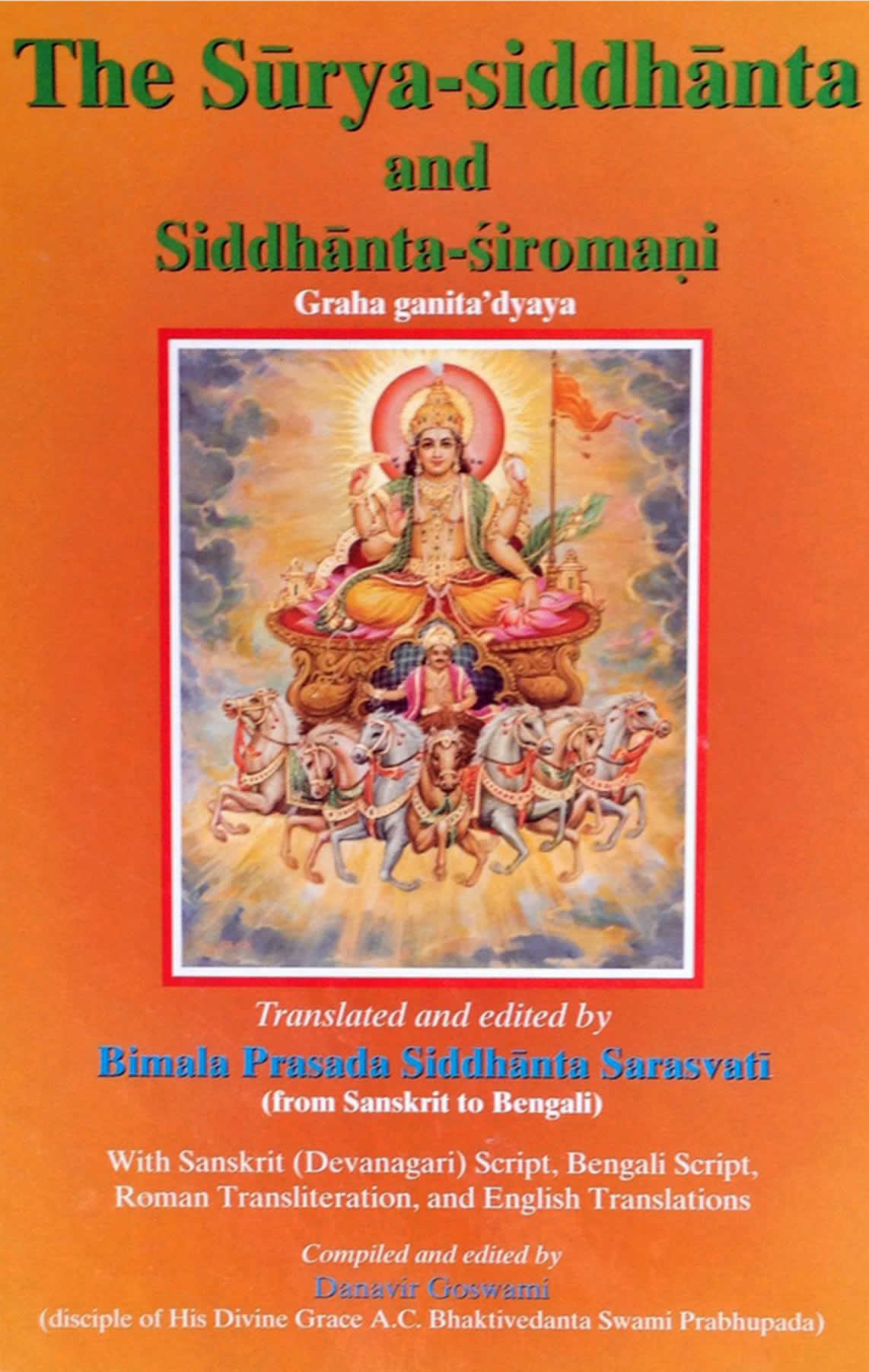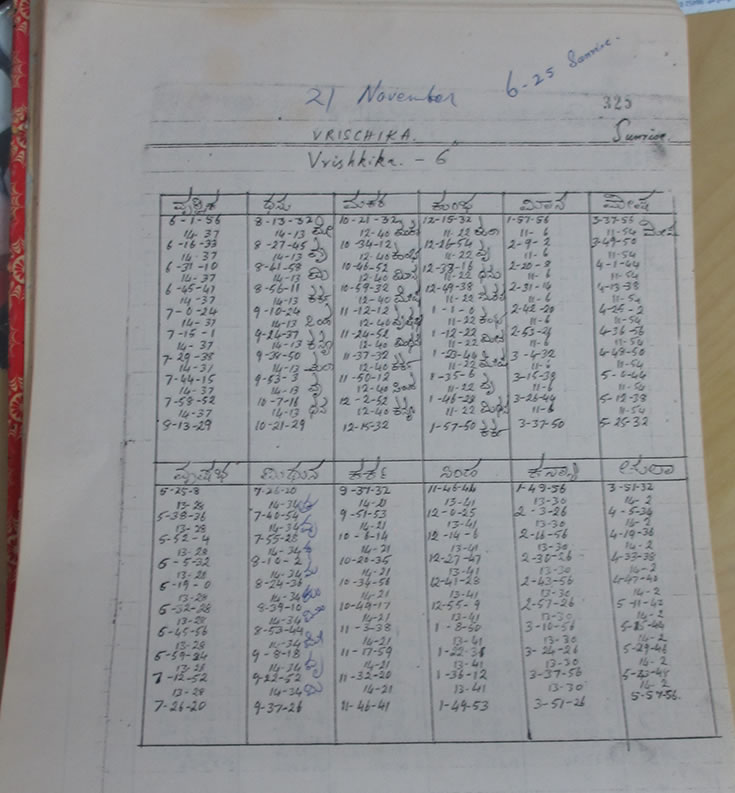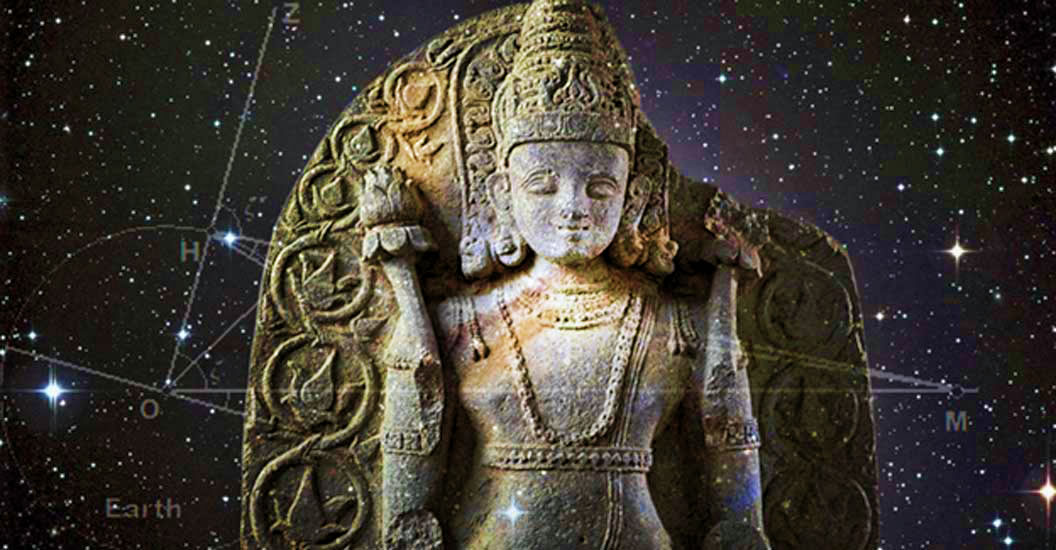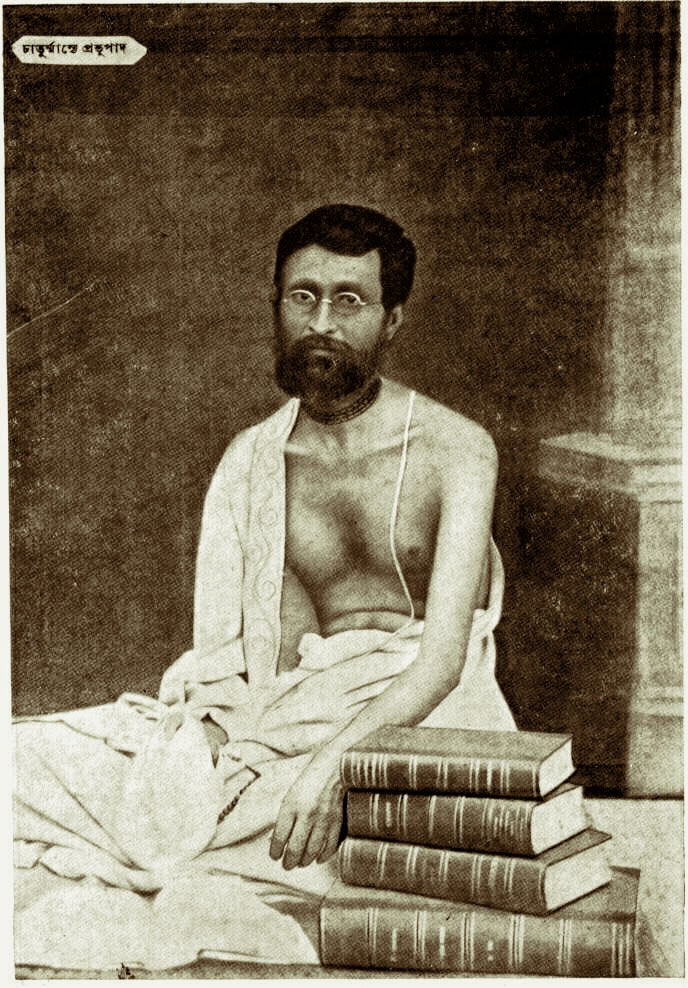A Response to –
The Argument for the Tropical Zodiac in Vedic Astrology
Shyamasundara Dasa
Copyright © 2012
This article was originally published in two parts in May 2012 on different websites like this one. Because I am often asked about this topic I decided to move the articles to my own site and merge them into one article for easier reference. At some point I may write a more formal article taking into account the developments over the years since this was first published. My objective was never to change the minds of the apostles of this system, an impossible task, but rather to give a different narrative showing the other side of the story. To provide credible information and counter arguments for those who oppose these views but do not have the time or resources to do the necessary research.
Dear Gaurakishor Das,
Hare Krsna. All glories to Srila Prabhupada.
You originally aimed your article, The Argument for the Tropical Zodiac in Vedic Astrology (PDF - right click to download), at Abhaya Mudra Mataji and her husband Patita Pavana Prabhu. Since then I have been approached by several devotees to respond to this article but wanted to give the above named authors or any other person professing to know Vedic astrology ample time to respond. Since they have been unable to respond I will now attempt to do so.
In this response I will focus on the article The Argument for the Tropical Zodiac in Vedic Astrology by Laura Barat (on investigation it appears that she is a student of Ernst Wilhelm) that you posted. It should be noted well that my response should not be construed as an attack on the tropical system of astrology, I am simply responding to the statements made by the author. Unlike some persons I have nothing against tropical astrology, it is one out of many systems of divination.
Pramana: categories of knowledge sources in Vedic epistemology. There are several categories of pramana but the three main pramanas are pratyaksa – empirical knowledge gathered via sense perception, anumana – knowledge arrived at by inference, and shabdha – knowledge acquired from an authority. The highest authority is shabdha brahma, knowledge coming from Krsna via the sastras – revealed scriptures. In Vedic culture shabdha brahma has the highest epistemic value and is the most authoritative source of knowledge.
Srila Prabhupada taught us that when we say or write something especially to a public forum that we should substantiate it with appropriate pramana. This applies not only when it comes to sastra but in all areas. Hence, it would seem that you have accepted this article by Laura Barat on face value even though the author did not substantiate even one thing that she wrote. She published this article on her website with absolutely no citations, references or other scholarly apparatus and we are now somehow expected to believe this.
In the future I may or may not write a formal article with all pramanas but for this informal article I will use a more relaxed style and may not provide all pramanas, in some places you will just have to accept what I say on faith. I hope you are as gracious with me as you were with her.

Thrasyllus of Mendes became the intimate friend, advisor and, astrologer to Roman Emperor Tiberias after successfuly predicting that Tiberias would become Caesar.
Thrasyllus of Mendes
Laura writes:
In America, Europe and in ancient Greece, Persia and Egypt, the Tropical Zodiac is and was always used.
False. In antiquity, up to the time of Claudius Ptolemy (fl. 150AD), all astrologers in the Greco-Roman world, Egypt and Chaldea like Berossus, Thrasyllus, Balbilus, Dorotheus of Sidon, Antiochus of Athens, Critodemus, Vettius Valens, Nigidius Figulus, Lucius Tarutius Firmanus and Marcus Manilius used the sidereal zodiac.
These ancient Babylonian and Greco-Roman astrologers were well aware that the four cardinal signs (Aries, Cancer, Libra and Capricorn) all began at some distance from the equinoctial and solstitial points. There were in fact at least two (ayanamsa) systems in vogue in ancient times called quite simply “System A” and “System B” by historians of astronomy- astrology [1]. These two systems noted that the first point of Aries was either 10° (in System A) or 8° (in System B) from the Vernal Equinox, the position of the Sun on the first day of spring. They were not confused about such things and were well aware of the difference between the two. In fact, in those hoary days the entrance of the Sun into stellar Aries did not coincide with the first day of spring because the Vernal Equinox was to the east of the first point of Aries. And depending on which system was used (A or B) spring began about eight or ten days after the entrance of the sun into the constellation Aries.
It was Ptolemy in his Syntaxis Mathematika and Tetrabiblos who accidently introduced what later came to be known as the “tropical system.” At his time what is now known as the tropical zodiac and sidereal zodiac [2] were so close together (less than one degree) as to be indistinguishable by naked eye observations because the ayanamsa was very small almost zero degrees. And, since the sidereal first point of Aries for all practical purposes coincided with the tropical zodiac that Ptolemy’s defining the first point of Aries with the vernal equinox became the new standard. And, considering that in those days books were copied by hand on papyrus or later parchment (no printing press what to speak of xerox, PDFs, Kindles or iPads) that only the most popular books were kept in circulation and texts previous to Ptolemy entered into oblivion. It took about 300-400 years before those who used the outdated ayanamsas of +8° and +10° switched over to the 0° ayanamsa, which continued to be accurate for some time. But because Ptolemy’s system was not based on fixed stars ever so slowly his zodiac began to diverge from the stars (sidereal) and it became what is now known as the “Tropical system.”

Cyril Fagan
Returning to the Laura’s statement:
In America, Europe and in ancient Greece, Persia and Egypt, the Tropical Zodiac is and was always used.
As for America and Europe there is currently a school of Western Sidereal Astrologers started in 1944 by the late Cyril Fagan, the father of modern western sidereal astrology. The prominent early followers were the late Donald Bradley/Garth Allen (originator along with Fagan of the Fagan-Bradley ayanamsa), Rupert Gleadow, and Gary Duncan (who I personally knew) among others. Kenneth Bowser is a prominent current member. They use western techniques but on a sidereal zodiac. These western siderealists have their own reasons and point out that western tropical astrology is all wrong and it was a mistake to follow Ptolemy and leave the fixed stars. They want to go back to the original sidereal zodiac used before Ptolemy. The following is an excerpt from Tropical Versus Sidereal Solunars – Part I published in American Astrology, July 1953:
In ancient time, down to as late as the 5th century A.D., all revolutions [solar returns] were computed in terms of the fixed or sidereal zodiac, which is not affected by precession; whereas in modern times these returns are computed with reference to the tropical zodiac invented in error by Hipparchus about B.C. 139 and which the author [Claudius Ptolemy] of the Tetrabiblos (2nd century A.D.) strove to popularize. It was the tragedy of the Greek Genius that it could never divest itself of the conviction that the equinoctial points, which perpetually rose and set due east and west respectively were fixed absolutely in space; hence their invention of a series of tropical zodiacs. Had they suspected otherwise they would have discovered that the earth itself was moving. In the Cleostratus version [of the tropical zodiac] the vernal point is believed to have been fixed in Aries 12°, in that according to Naburiannu (System No. 2) in Aries 10°, in the Callippic or Hellenistic version, according to Kidinnu (System No. 1) in Aries 8°, while Hipparchus fixed it absolutely in Aries 0° (its true position being then Aries 4°51') [i.e. the sidereal position of the vernal point at the time of Hipparchus, about 130 B.C.].
[Note it seems that what Neugebauer and Van Hoesen term as “System A” Fagan calls “System 2”, that is, Aries 10°; and what Neugebauer and Van Hoesen term as “System B” Fagan calls “System 1”, that is, Aries 8°.]
Sidereal System Cannot be
Ignored by Tropicalists
Tropical astrologers are forced to admit the problem of their “moving system” when it comes time to apply a predictive technique such as transits. In transits, called Go-chara in Sanskrit, the relative on-going daily motion of planets in regard to the radical position of the planets at birth is taken into account. Certain transits in particular, such as those of Saturn, must be carefully watched because of their potentially devastating effects. In Vedic astrology, which is sidereal, there is no problem employing this technique. The closer the transiting planet gets to the target the more intense becomes the effect until the planet gets within a critical range, its orb of influence, at which time it unleashes its full effect for good or for bad. The orb of intense influence is usually about one or two degrees.
In tropical astrology transits present a problem for the following reason: suppose the target planet in the birth chart is at 15°Aries in the tropical zodiac. By the time the person whose chart is involved is about 35 years old the accumulated precession of the equinoxes will amount to about half a degree. Which means that 15° of Aries in the tropical zodiac is now half a degree to the west of that point in the sky where the target planet was at the time of birth. This means that the actual position of the target planet is now really at about 15° 30' of Aries in the tropical zodiac. If a tropical astrologer were studying a transit of Saturn to the target planet at 15° of Aries he would make a gross mistake because the target planet has actually moved half a degree because the whole zodiac moved. The older the person is the greater the error because the accumulated precession increases. [3]
To get an accurate result, Tropical astrologers are forced to take into account the precession of the equinox in order to locate the actual position of the target planet. It would of course be much more sensible to use the sidereal zodiac in the first place rather than try to mix apples and oranges.
Another prominent technique in western tropical astrology is the Solar Return chart. In this method a chart is erected for the moment that the transiting sun exactly conjoins the natal sun. The same problem exists in solar return charts as pointed out in transit charts but here the problem is even worse.[4] The whole idea of the solar return chart is to get the exact time of conjunction and then draw up a chart from which predictions are made for the coming year. But because the tropical sun moves away from the true position of the natal sun it will be impossible to get the exact conjunction time unless precession is taken into account. At the present rate of precession this would mean that by the time a person was just eight (8) years old the conjunction time between the tropical sun and the true position would be off by more than two hours, enough time to significantly alter the solar return chart so that the ascendant is totally wrong! This failing of Tropical astrology in regard to transits and solar returns is another demonstration of its internal inconsistency. There is no such inconsistency problem with Vedic sidereal astrology.
Vedic precssional rate more
accurate than the Greek
Reverting back to Laura, she then says “In about 100 A.D., a Greek astronomer by the name of Hiparchius” this is an apparent error as I know of no astronomer by that name and a quick Google of the name will prove me correct. But there is the famed astronomer by the name of Hipparchus of 2nd century BC whom we mentioned earlier. Among other things it is said that he was the first in the west to notice the precession of the equinox. Ptolemy, continuing the work of Hipparchus, came up with a precessional rate of 36"/year, that is 36 seconds of arc per year, whereas the Surya Siddhanta gives a rate of 54"/year. The current measured rate of precession is about 50.25"/year which is very close to the Vedic value but far from the Greek. The Vedic civilization has always known of the precession of the equinoxes as will be explained later.
Vedic Astronomers Never
Forgot the Precession
Laura continues (emphasis mine):
At the same time the Hindus named their star constellations after the 12 Signs, evidence from several ancient texts shows they lost knowledge of the precession of the equinox and these measurements of 30 degrees each of the star constellations became FIXED and remained so up to the present day. … and the works of the great Varamahira [sic] all mention the Tropical Zodiac as the harbinger of the signs. Oddly, they also mention the first part of Aswini as the beginning of Aries. It becomes clear that the authors were not aware of the Precession of the Equinox … the Indians lost knowledge of precession of the equinox and therefore the Sidereal Zodiac for the Rasis was born.
First of all Laura doesn’t present the evidence or even reference these mysterious ancient texts. Further, her statement is simply not true, the works of Varaha Mihira are studied by all serious students of Vedic astrology, he directly states that previously the solstitial point was in a very different place than where it was at his time. He writes:
Years ago the dakshinayana was in the middle of Aslesha and uttarayana was in the middle of Dhanistha. This has been mentioned in the early works. Brihat Samhita 4.1
This means that previously Cancer 24° was the northern solstitial point and Capricorn 24° was the southern point. But at the time of Varaha Mihira they were 1° Cancer and Capricorn respectively.
The precession of the equinoxes, and thus the tropical system have been known to the Rishis since time immemorial. The Satapatha Brahmana mentions that the vernal equinox took place when the Sun was in the Kritikkas (26AR40 to 10TA00). This and other references in the Brahmana literatures referring to solstitial colures being in various parts of the zodiac prove that the precession of equinoxes was known in remote antiquity (3000 BC). Thus astrologers in India were very well aware of the tropical system of astronomy and precession of the equinoxes.
Islamic Tropical Astrologers
Switched to Sidereal
They also became familiar with tropical astrology because they had to interact with the many Islamic court astrologers such as Al Biruni who came from Arabia, Turkey and Persia and practiced that system. The Muslims dominated the politics of India for 800 years but instead of the Indians taking up tropical astrology, the Muslim astrologers in the courts of the Muslim kings took up sidereal astrology. Why would the victor take up the way of the vanquished? Was it more effective? More accurate?
Surya-siddhanta Calculations
Laura then says:
The Surya Siddhanta is the greatest astronomical text of the Hindus and gives all the calculations to calculate the Lagna, the Nakshatras, planetary positions within Nakshatras and Tropical positions of the planets. NOWHERE in the Surya Siddhanta does it say to use Sidereal Signs and Sidereal positions of planets to erect a horoscope. In fact, there is more evidence in the Surya Siddhanta that the Tropical Zodiac is to be used instead of the Sidereal Zodiac when erecting horoscopes. And here is why….The Surya Siddhanta gives the calculations for finding the Nakshatra position of the planets. It then uses an ayanamsha to convert the planetary positions back to Tropical positions and from there find the Tropical Lagna.
After finding the Tropical Lagna the Surya Siddhanta leaves it there. Since it is impossible to find the Sidereal Lagna without the use of the Tropical Zodiac, then it would be concluded that the Surya Siddhanta would mention to convert the Tropical Lagna back to its Sidereal position if that were indeed the method to be used. It does not mention this at all.
In this section the author displays a complete and utter ignorance of the contents of the Surya-siddhanta. We strongly suspect that she is just repeating what some one else told her and so goes the “parampara” of ignorance in the Kali-yuga. And, we note that our own Gaurakishor Dasa is also promoting this “parampara.” But before addressing her assertions let us first briefly discuss about traditional Vedic astronomical literature.

Divisions of Astronomical Texts
Srila Bhaktisiddhanta Saravati Thakura in his purva asrama as Sriman Bimal Prasada Datta, while still a teenager, published a translation with commentary on the Surya-siddhanta and Siddhanta Siromani. In his introduction to Siddhanta Siromani he tells us that in mathematical astronomy there are four sub-branches: siddhanta, tantra, karana and sarini.- Siddhanta: the branch of mathematical astronomy based on observation of planets and stars and their mathematical aspects. An example of this genre is Surya-siddhanta.
- Tantra: the branch of mathematical astronomy dealing with the hypotheses on siddhanta and its elaborate explanation. An example of this genre is Siddhanta Siromani, which is an elaborate and superexcellent commentary by Bhaskaracarya on the Surya-siddhanta.
- Karana: the branch based on useable mathematics to determine the results of siddhanta. Examples of this class are Grahalaghava, and Karana Kutuhala.
- Sarini: the tables of calculations (ephemerides) made using the karana texts for calendars, horoscopes etc. Examples of sarini are Makaranda and Dinakaumadi etc.
The Surya-siddhanta is not used for erecting a horoscope or other practical applications. Rather it is a collection of formulas and methods that are available to the astronomer. It is not at all practical for using to calculate anything because for one thing it uses a very long epoch either from the beginning of creation, or beginning of the kalpa or mahayuga. This results in huge unwieldy numbers such as the number of revolutions of the Sun at 4,320,000 of the Moon 57,753,336 of Mars 2,296,832, etc. Dealing with such large numbers would be difficult using a calculator what to speak trying to multiply and divide them by hand.
Cryptic Surya-siddhanta
Resuming our discussion on Surya-siddhanta, Burgess in his introduction to his translation of Surya-siddhanta points out the way that it is written (emphasis mine):
In the first place, for the terms used there are often many synonyms, which are employed according to exigencies of the verse: thus the Sun has twelve different names, Mars six, the divisions of time two or three each, radius six or eight, and so on. Again the method of expressing numbers, large or small, is by naming the figures which compose them, beginning with the last and going backward; using for each figure not only its proper name, but that of any object associated with the Hindu mind with the number it represents. Thus, the number 1,577,917,828 (SS 1.37) is thus given: Vasu (a class of deities, eight in number) – two – eight –mountain (the seven mythical chains of mountains) – form –figure (the nine digits) – seven – mountain – lunar days (of which there are 15 in a half month).
Once more, the style of expression of the treatise is, in general, excessively concise and elliptical, often to a degree that would make its meaning entirely unintelligible without a commentary, the exposition of a native teacher [guru] … This over-conciseness, however is not wholly due to the metrical form of the treatise: it is characteristic of much of Hindu scientific literature, in its various branches; its text-books are wont to be intended as only the text for written comment or oral explication and hint, rather than fully express, the meaning they contain.
As Burgess points out the Surya-siddhanta and other such literature is written in an almost sutra like way where conciseness is valued above clarity. It is humorously said that a sutrakara (writer of sutras) valued conciseness to the point that he would be happier if he were able to somehow subtract a letter or word from his composition rather than have a son born in his family. Hence for brevity’s sake a rule is mentioned once and not repeated as the student is expected to know how to apply them under the guidance of a guru. By repeating rules it makes the text longer, just the opposite of the conciseness the author is trying to achieve. It should also be remembered that the Vedic tradition is to memorize a text, I personally know persons who have completely memorized important Jyotish texts. Concise texts without redundant repetitions are shorter hence much easier to memorize.
And, as the Surya-siddhanta itself says:This mystery of the gods is not to be imparted indiscriminately: it is to be made known to the well-tried pupil, who remains a year under instruction. SS 6.24
So without a real guru one will misunderstand the Surya-siddhanta. It also implies that the students be qualified, it is secret and not for everyone. We will now see by direct inspection how a person can misunderstand the Surya-siddhanta because they have no guru.
Reverting back to the Laura’s statements, she writes:NOWHERE in the Surya Siddhanta does it say to use Sidereal Signs and Sidereal positions of planets to erect a horoscope.
As we have shown the Surya-siddhanta is not meant for erecting a horoscope, it is a collection of theorems and formulas. To calculate a horoscope you would use a text in the sarini class such as Makaranda, (before computers you would use an ephemeris). Secondly the rule for ayanamsa is defined in Surya-siddhanta 3.9-12, the student is expected to know via the oral tradition, that is, his guru’s instruction, when to apply it for getting sidereal or tropical position of the various phenomena, not that the Surya-siddhanta has to repeatedly tell you to apply the ayanamsa which by doing so would enlarge the text and detract from its conciseness. The student if he was not clear would consult his guru or a commentary such as Siddhanta Siromani for detailed explanation.
In regard to finding the lagna (ascendant, rising sign) Laura states:
It then uses an ayanamsha to convert the planetary positions back to Tropical positions and from there find the Tropical Lagna. After finding the Tropical Lagna the Surya Siddhanta leaves it there. Since it is impossible to find the Sidereal Lagna without the use of the Tropical Zodiac, then it would be concluded that the Surya Siddhanta would mention to convert the Tropical Lagna back to its Sidereal position if that were indeed the method to be used. It does not mention this at all.

The rules for calculating the lagna are found at Surya-siddhanta 3.46-50. It does not at all say to convert anything to tropical system. What she doesn’t know is that the “planets” in question is just one planet – the sun. In order to find the lagna one must first know the longitude of the sun. The method for finding the true and mean longitude of the sun is explained in Surya-siddhanta 3.13-20. By using a sanku (gnomen, a stick 12 angulas — finger width — high) one measures its chaya (shadow) as it falls on a circle circumscribed around the sankhu. By doing this and applying various trigonometric formulas one can ascertain the latitude of the place from the chaya, the declination of the sun from the zenith distance, true longitude from the declination and mean longitude from the true longitude. This will always be the sayana (tropical) longitude of the sun because of the very nature of the system and that the whole physical geometry is in relationship to the equinoctial points which move incrementally on a yearly basis (called the precession of the equinox). After the tropical longitude of the sun is found then the rule for finding the lagna is applied (Surya-siddhanta 3.46-50). It is left for the student to know (from his guru) that they should apply the ayanamsa rule (Surya-siddhanta 3.9-12) at the end of this procedure. From what I have described above there is no conversion from sidereal to tropical and just “leaving it there” as the author asserts.
Now from my very brief descriptions of what is involved one can see that this method of finding the lagna from the Surya-siddhanta is very ponderous, complicated and time consuming and requiring knowledge of spherical trigonometry. If this was the method that everyone was required to use for calculating the lagna then we would be better off because we would be rid of so many mathematically challenged “astrologers” (95% of them) who are a bane to humanity. Though it would rid us of the bogus astrologers it would be slow and impossible to do at night. The solution is that methods used in the Surya-siddhanta are distilled down in the karana and especially sarini (ephemeris, etc) texts for quick calculations, even for finding the lagna at night.
Practical Methods of Working Astrologers
We should also remember that until recently astrologers did not have an international clientele who accessed them via the Internet. Only with the spread newspapers and the telegraph from the late 19th century onwards have astrologers spread their reach. For most astrologers before the late 19th century and well into the 20th century most of their clients would be locally born. I recall the first time I tried to have my horoscope done in 1977 in Hyderabad that the astrologer could not properly calculate it especially my lagna, because he had never done the chart of someone who was not born in India.

A page from the “Lagna Book” of Sashikanta Jain. It is for the date November 21, when the Sun is in Vrshchika (Scorpio) at 6° and the sun rise at 6:25. The script is Kannada.
One of my main astrology teachers, Sriman B. G. Sashikanta Jain of Bangalore, with whom I studied from 1981-83 was a specialist in prasna sastra. This meant that the lagna to be calculated was always for the same city, Bangalore. And since the client was sitting in front of him expecting an answer it had to be done quickly. Since all his clients came to him in Bangalore he only had to calculate the lagna for one place. What he did was to get a very large book and for every day of the year he made a table for what times the lagna would change on that day. Not only the lagna but also the change of navamsas within that lagna were tabulated. Since the Vedic day begins at sunrise and the sidereal position of the sun would be known for that day every year it was easy to calculate what the times for each lagna and navamsa would be using the rules in karana and sarini texts. Even today his son uses this old hand written book as a backup for calculating the lagna if his computer is not available.
The point being that the author Laura Barat has no experience of the ground realities and how traditional Vedic astrologers used the principles found in the Surya-siddhanta on a day to day basis. And from this lack of understanding of the text and cultural matrix it comes from she and those she is echoing have come up with all kinds of inaccurate notions. Living in obscure parts of the universe 10,000 miles from India and without any gurujana to guide them leads to such conclusions. This shows why one needs to have a guru so that one does not go on wild goose chases.
As in all aspects of Vedic culture what is written is only a small portion of the teachings the rest comes from the oral tradition of the Guru-Sishya interaction. Tradition is also a very important pramana (Srimad Bhagavatam 11.19.17) you simply cannot learn any subject by reading a book, and this is even more so with Vedic subjects. As Srila Prabhupada would explain that one cannot become a doctor just by reading some medical books. The tradition of using sidereal system going from Guru to Sishya is very clear. This is also the tradition of my param guru Srila Bhaktisiddhanta Sarasvati Thakura who was a Jyotish Acarya; he first published his translation and commentary on the Surya-siddhanta at the age of 16! He also wrote a translation and commentary on Siddhanta Siromani and several other texts.
Modern Example from the West
To understand just how impractical and ludicrous the idea of using the Surya-siddhanta for calculating horoscopes is let us take a modern example from the West. Robin M. Green’s Spherical Astronomy is a highly regarded text on positional astronomy; the branch of astronomy that is used to determine the location of objects on the celestial sphere, as seen at a particular date, time, and location on Earth. This 520 page text contains all the formulas used by astronomers, as the blurb from the back cover says:
This is an introductory textbook on spherical and positional astronomy. It is entirely suitable for use by students with no prior knowledge of classical astronomy. At the same time, it is sufficiently comprehensive to make it a useful background reference book for anyone engaged in practical astronomy. The first three chapters sketch essential background: mathematical techniques and coordinate systems. Successive chapters then give treatments of refraction, aberration, stellar parallex, precession, nutation and proper motion. An entire chapter is devoted to astrographic plate measurements. The gravitational two-body problem is solved and applied to solar system dynamics. Novel areas include a full treatment of binary star orbits and two chapters on developments in radio astronomy. Worked examples and problems to be solved by the reader ensure that this is a valuable textbook.
This text gives all the formulas, and much more, that an astrologer would need to calculate a horoscope. But no astrologer would ever use this text to calculate anything. Instead what they would do is use an ephemeris like The American Ephemeris 1950-2050 at Noon that is calculated using the principles found in Mr. Green’s book.
For those of you who have never calculated a chart by hand an ephemeris is a catalog of the daily motion of the planets (in case of the Moon usually every 12 hours) in relation to a certain time and place. Knowing the planetary position at a specific time and place the astrologer can interpolate what the planetary position will be for the time and place where the chart needs to be calculated. With a little practice you can erect the basic horoscope in 15-30 minutes depending on your mathematical abilities. Try doing that with a text on spherical astronomy!
Even modern astrological software doesn’t do calculations for each planet using astronomical formulae found in positional astronomy texts. They instead create a digital ephemeris (such as the JPL or Swiss ephemeris) and using that ephemeris the software interpolates the planetary position and creates the chart. Why? Because it takes a lot less number crunching to interpolate between already calculated planetary positions than to calculate the planetary position from basics using astronomical formulae. This is especially true when doing something like a transit search which, depending on the time span involved, could involve 10s of thousands of “hits” (I have done such searches). Using a digital ephemeris such transit searches take mere seconds to calculate but would take significantly longer using the brute force method.
On this link is a PDF example of a transit search from 2012-2031 of the major planets (Mars, Jupiter, Saturn and Rahu) to all the other planets and also includes sign ingresses. It could have been a lot longer had we included all the planets on both sides, and especially the Moon’s transits would have greatly increased the volume. But this example shows why even modern computer software uses digital ephemerides rather than doing brute force calculations, it just makes more sense.
Reverting to our original topic, for exactly the same reason no one would use the Surya-siddhanta to calculate a horoscope any more than they would use Mr. Green’s text on spherical astronomy to do the same, because like Mr. Green’s text Surya-siddhanta is a text on Vedic spherical astronomy. Instead the practitioner would use an ephemeris calculated on the basis of these texts. In jyotish such ephemeris texts are called sarini.
We note that one of the apostles of the “Tropical Vedic astrology” owns a Vedic astrological software company that has at its heart the JPL digital ephemeris. From their website:
“… has the most accurate planetary calculations, thanks to the extremely accurate Swiss Ephemeris - which is an astrologically designed version of the most accurate NASA JPL ephemeris. … is thus the most accurate software available to the Vedic Astrologer.”
So even he doesn’t use brute force methods, what to speak of brute force methods based on Surya-siddhanta. But rather uses a digital ephemeris. And using an ephemeris is what all astrologers have done all over the world since the beginning. So it is absurd to postulate that anyone in Vedic culture would calculate a horoscope using anything other than a sarini text. And, it is even more absurd to create a whole system of astrology based on that.
Tajika techniques
Laura continues:
Tajika techniques, which originated in Tajikstan, an ancient Persian culture, are the originators of Greco-Roman astrology and thus, modern day Western Astrology.
I’m afraid not. Rather so-called Persian astrology lying between India and the Mediterranean is an amalgam of Hellenistic and Vedic astrology. Early Hellenistic writers like Dorotheus of Sidon were translated into Persian. At a much later time Middle Eastern writers like Abu Masshar, and Massha Allah were translated from Arabic into Latin. And regarding Tajika, those who do use Tajika in India use a sidereal zodiac not tropical.
Inconsistent Tropical Axiomatic System
Laura writes:
Modalities of the Rasis (Signs)
Another valid argument for using the Tropical Zodiac and confirming the relationship of Rasis to the intertwined movement of the Sun and the Earth is the modalities of the Signs. Aries, Cancer, Libra and Capricorn are called moveable signs. Their common characteristic is change and their beginning heralds a change in the Sun's movement. At 0 degrees Aries the Sun crosses the equator on its way North, changing from the Southern hemisphere to the Northern hemisphere.
At 0 degrees Cancer the Sun changes from moving North to moving South. At 0 degrees Libra the Sun crosses the equator on its way South, changing hemispheres and at 0 degrees Capricorn the Sun begins to move North. If the Rasis were sidereal and not based upon the Sun's movement in relation to the Earth, there is no valid reason why these particular signs would herald change.
The fixed Rasis, Taurus, Leo, Scorpio, and Aquarius, represent the Sun being steadfast and resolute on its course. The dual Rasis, Gemini, Virgo, Sagittarius and Pisces, represent the Sun losing momentum on its course and getting ready for a new beginning. This is why these signs are energy transformers. The dual signs are steadfast and resolute just enough to get the job done but are also flexible enough to allow for necessary change.
Again, there is no reason for the aforementioned Signs to carry any of these qualities divorced from the fact of the Earth's relationship to the Sun. Just having a certain constellation of Stars behind the Sun does not automatically bring these characteristics, especially if such "constellations" do not carry consciousness as they do not per Parasara. The qualities are ONLY explained by the Sun's motion relative to the Earth.
This is the least compelling of Laura’s arguments and really make no sense at all. It appears to be because as an apostle of the tropical system she has not quite understood what the main proponents of the tropical system are saying. Here is a clearer statement by a famous tropical astrologer Steven Forrest. After describing how the motion of the Sun affects the seasons, he writes (emphasis mine):
Astrology really has nothing to do with the stars themselves. It is based solely on these variations in light, or, more simply, on the seasons. But what about Aries and Taurus and Capricorn? Those are constellations. They are stars. If they really have nothing to do with astrology why do we talk about them?
Millennia ago, astronomer-priests noticed that on the morning of the day when light at last began to make inroads into the darkness, the sun rose into the stars of Capricorn. The constellation served as a convenient visual marker for the location of the sun along the ecliptic [the path of the sun through the zodiac]. Such knowledge helped our forebears in practical ways, such as timing the planting season. The convenience turned out to be temporary.
Due to the slow wobble in the earth’s axis, the position of the sun on the first day of winter gradually shifted backward through Capricorn toward the constellation Sagittarius. Traditions die slowly, though. The priests were accustomed to saying that when earth entered winter, the sun entered Capricorn. They kept right on saying it, even when Sagittarius was truly the winter’s constellation.
This slip-up produced no serious problems for astrology itself, but it has been hard on public relations. Astronomers are fond of saying, ‘Even if there were something to astrology, all you Arians were really born with the sun in Aquarius [it should be Pisces], so you are reading the wrong sign.’ The problem here is one of communication. When an astronomer says ‘Aries,’ he or she means a certain group of stars. To the astrologer, Aries means something entirely different. It refers to a certain phase in the earth’s orbit around the sun, or, more simply, to a certain season.
Seasonal changes, then, not stars, are at the heart of sign symbolism. Through variations in the length of night, we mark four critical points that help us divide the circle. Infinity is broken down into four phases, each with its own distinctive character. We call these four phases elements. [5]
He goes on to explain these elements in terms of the seasons.
. . . The first element arises in the equilibrium of light and dark, but at a time when light has the momentum, when light is increasing. Astronomically, this moment is called the vernal equinox, but most of us know it simply as the first day of spring. Astrologically, the vernal equinox symbolizes the birth of the element fire. This is the principle of action. Like spring time, its spirit is one of out rushing energy, charging into the cosmos, shattering all that stands in its way. Uncompromising invincibility of purpose-that is fire. [6]
What Mr. Forrest is essentially saying is that the signs of the tropical zodiac derive their meanings based on the seasons of the year which are determined according to the sun moving through the equinoctial and solstitial points. Thus, according to tropicalists, Aries has its unique qualities because it is a spring sign, and the qualities of spring animate this sign. And, similarly Cancer has its unique qualities because it is a summer sign, Libra a fall sign and Capricorn a winter sign. The Western tropicalists thus firmly believe that, “Astrology really has nothing to do with the stars themselves.” And, “Seasonal changes, then, not stars, are at the heart of sign symbolism.”
It is very easy to demonstrate, via the method of reductio ad absurdum, that this proposition of the tropical astrologers is untenable. Simply stated, according to first principles astrology is a mantic science applicable to everyone born on this planet. Thus, it should be equally applicable to people born south of the equator. But south of the equator the seasons are reversed. In the southern hemisphere when the Sun enters tropical Aries it is the first day of fall not spring. Similarly, Cancer is a winter (not summer) sign, Libra a spring (not fall) sign, and Capricorn a summer (not winter) sign. According to the tropical astrologer’s definition of equating sign to season this leads us to the absurd conclusion that south of the equator we must reverse the meaning of all the signs. Thus according to them someone born in Australia with the sun in Aries actually has the qualities of sun in Libra! Tropical astrology, to be logically consistent would have to have a separate, mirror image, system of astrology for the southern hemisphere. We note however that tropical astrologers do not do this. They read a southern hemisphere chart the same as they do a northern hemisphere chart. Thus they can’t maintain the logical consistency of their own axioms. Therefore we must conclude that the theoretical basis of the tropical system of astrology is not elegant, logically consistent, or intellectually satisfying.
Subscribe to our mailing list. And get our intermittent newsletter and updates to this site.
Conclusion
In conclusion we have shown that even in the West in ancient antiquity the Babylonian, Egyptian, and Greco-Roman astrologers till the time of Ptolemy used the sidereal zodiac. That in modern times there is a school of Western sidereal astrology whose founding father, Cyril Fagan, revived the ancient Babylonian system. We demonstrate that technical tropical astrologers concerned about accuracy realize the need to use sidereal position of planets in regard to transits of slow moving planets like Saturn and especially in regard to solar returns. That the Surya-siddhanta had a much more accurate precessional rate than the Greeks had. That the followers of Vedic cultures always had knowledge of the precession of the equinoxes documented as far back as 3000 BC and they never lost this knowledge. That even though the Muslim conquerors ruled India for 800 years their own court astrologers who were originally tropicalists took up the sidereal system of those that they had vanquished rather than the other way around because it was superior. We also briefly explain the four divisions of mathematical astronomy and that the Surya-siddhanta is a collection of formulas and rules not to be used for practical daily work like erecting a horoscope. That it is purposely written in such a way that to understand it requires the guidance of a guru along with elaborate commentaries like the Siddhanta Siromani. We demonstrate using the rules found in the Surya-siddhanta how the lagna is found using sanku and chaya and that the opposing views are erroneous in their conclusions. We also demonstrate that the opposing author is not aware of the ground realities of how an astrologer would calculate the lagna in their actual daily practice. We assert that Tajika system of astrology is not the source of Hellenistic astrology and modern western astrology. We also demonstrate that the tropical astrologer’s contention that meaning of the signs are tied to the seasons leads to an absurdity when considering that in the southern hemisphere the seasons are reversed thus revealing the internal inconsistency of the theory. It is our contention that Vedic astrology, the system of astrology used by the followers of Vedic culture always has been and will continue to be sidereal. But we recognize that as the Kali-yuga progresses many divergent and heterodox views will emerge and that it is our duty to protect and properly convey the ancient traditions for future generations despite these perversions.
dasa dasa anu dasa
Shyamasundara Dasa
krsne matirastu
Watch the humorous short video “Hitler finds out his sidereal horoscope.”
Further Reading
Did Bhaktisiddhanta use a Tropical Zodiac? ‒ Scrutinizing Silly Notions
End Notes
[1] Neugebauer and Van Hoesen, 4. ↩
[2] Tropical means the moving or turning system, the tropical zodiac is based on defining the 1st point of Aries as being the position in the sky where the Sun is at when it crosses the equator going from south to north, that is, the vernal equinox, the first day of spring. However, because of various perturbations of the earth’s motion the position in the Sun is not in the same place when this phenomenon occurs the next year. This apparent motion of the Sun is called the precession of the equinox. Sidereal zodiac is defined in relationship to the fixed stars in the sky and doesn’t move. ↩
[3] Hand, 29-31. ↩
[4] ibid ↩
[5] Forrest, 30-31. ↩
[6] Ibid., 31. ↩
References:
Burgess, E., 1860, The Surya Siddhanta, A Test-book of Hindu Astronomy, editor Gangooly, P., Delhi: Motilal Banarsidass Publishers Private Limited.Chakravarty, A.K., 2001, The Suryasiddhanta -- Bibliotheca Indica Series No. 321, Kolkata, India: The Asiatic Society.
Fagan, Cyril, 1971 (first edition), Astrological Origins, St. Paul, Minnesota: Llewellyn Publications
Forrest, Steven, 1984, The Inner Sky: The Dynamic New Astrology For Everyone, New York: Bantam Books.
Hand, R., 1986 (thirteenth printing), Planets In Transit, Glouster, MA: Para Research, Inc.
Madhavan, Dr. S., Modern Astrology, 2012 January, February, Bangalore, India: Agrany Publications.
Neugebauer, O., and Van Hoesen, H.B., 1959, Greek Horoscopes, Philadelphia: The American Philosophical Society.
Siddhanta Sarasvati, Bimal Prasad, 2007, The Surya-siddhanta and Siddhanta-siromani, editor Danavir Gosvami, Noida, India: Rupanuga Vedic College.




